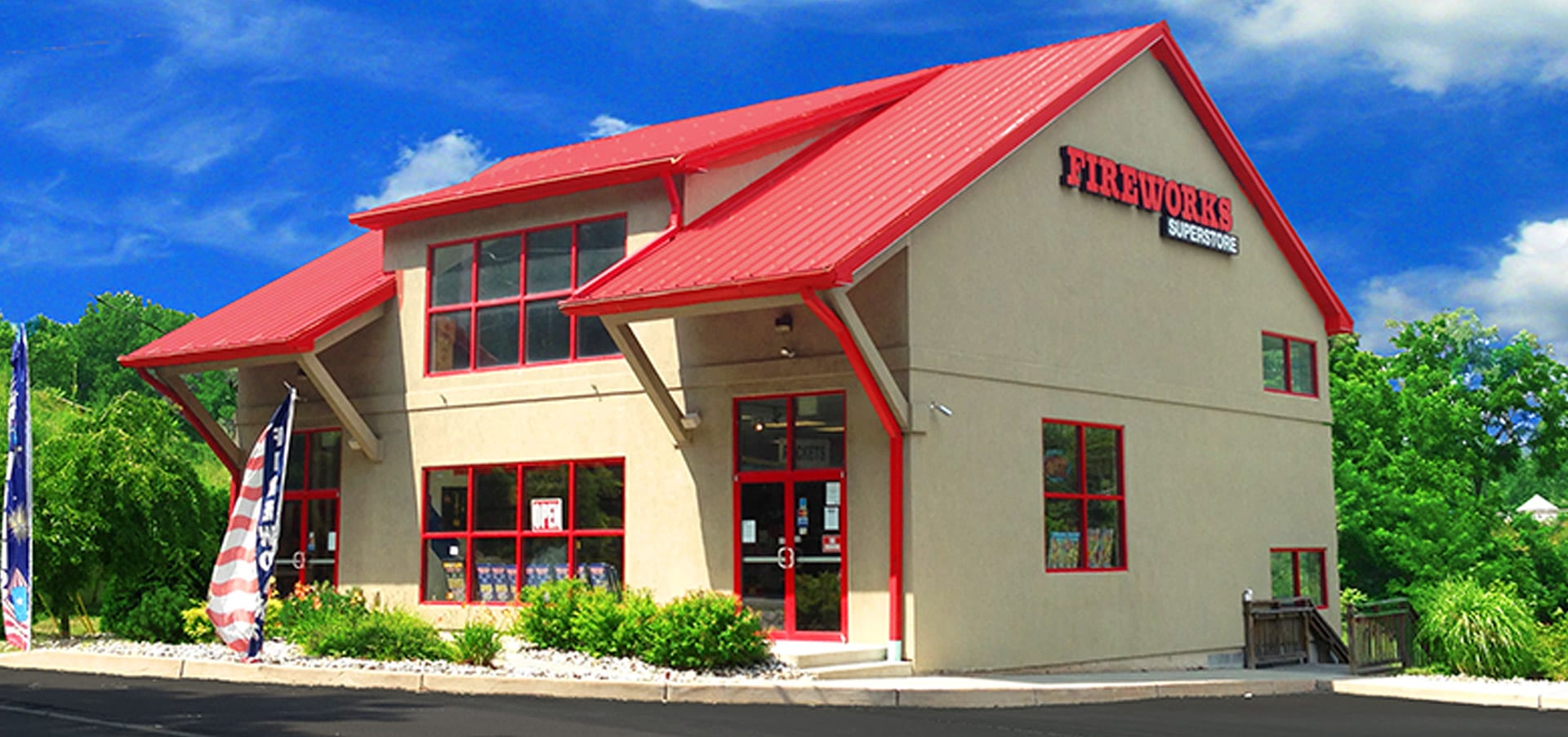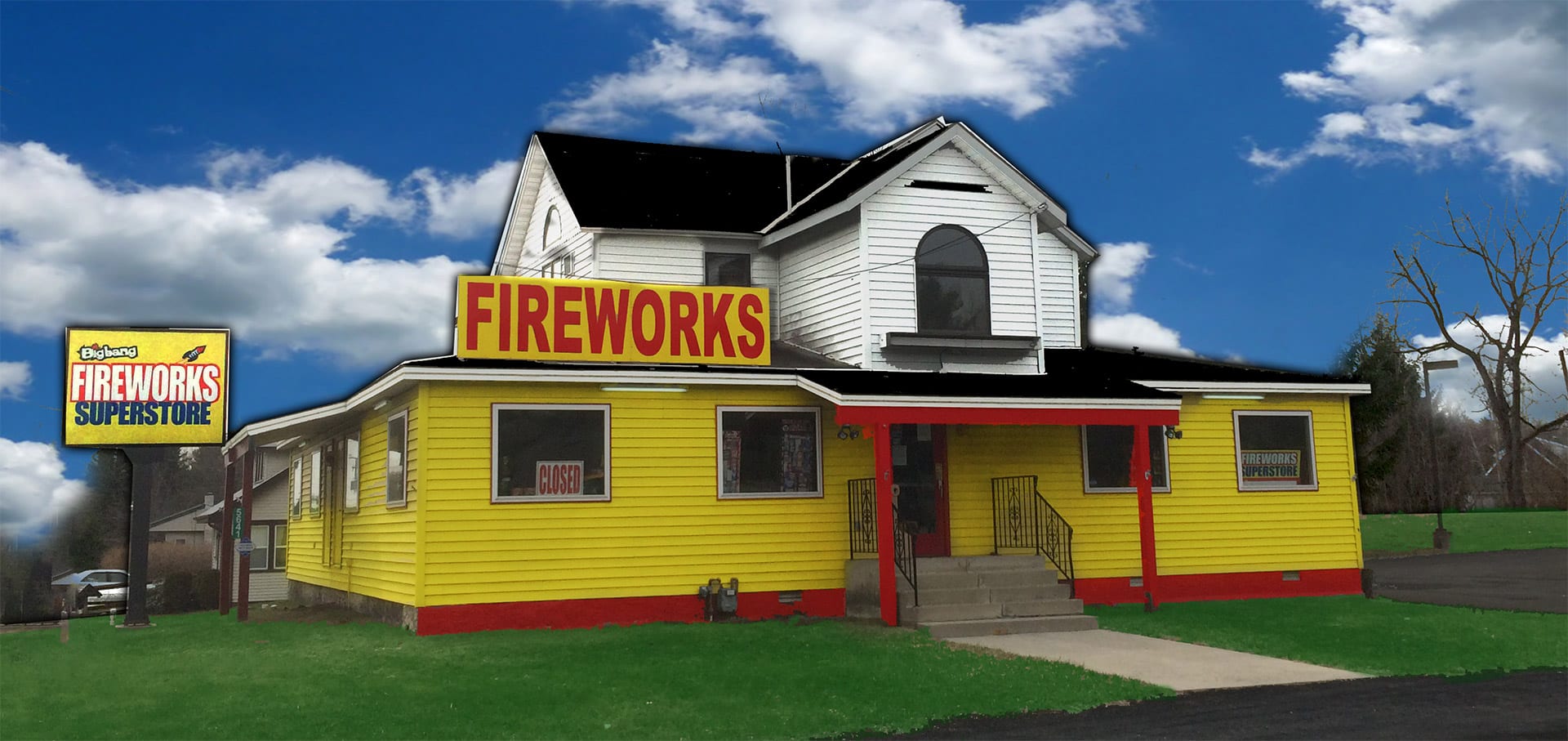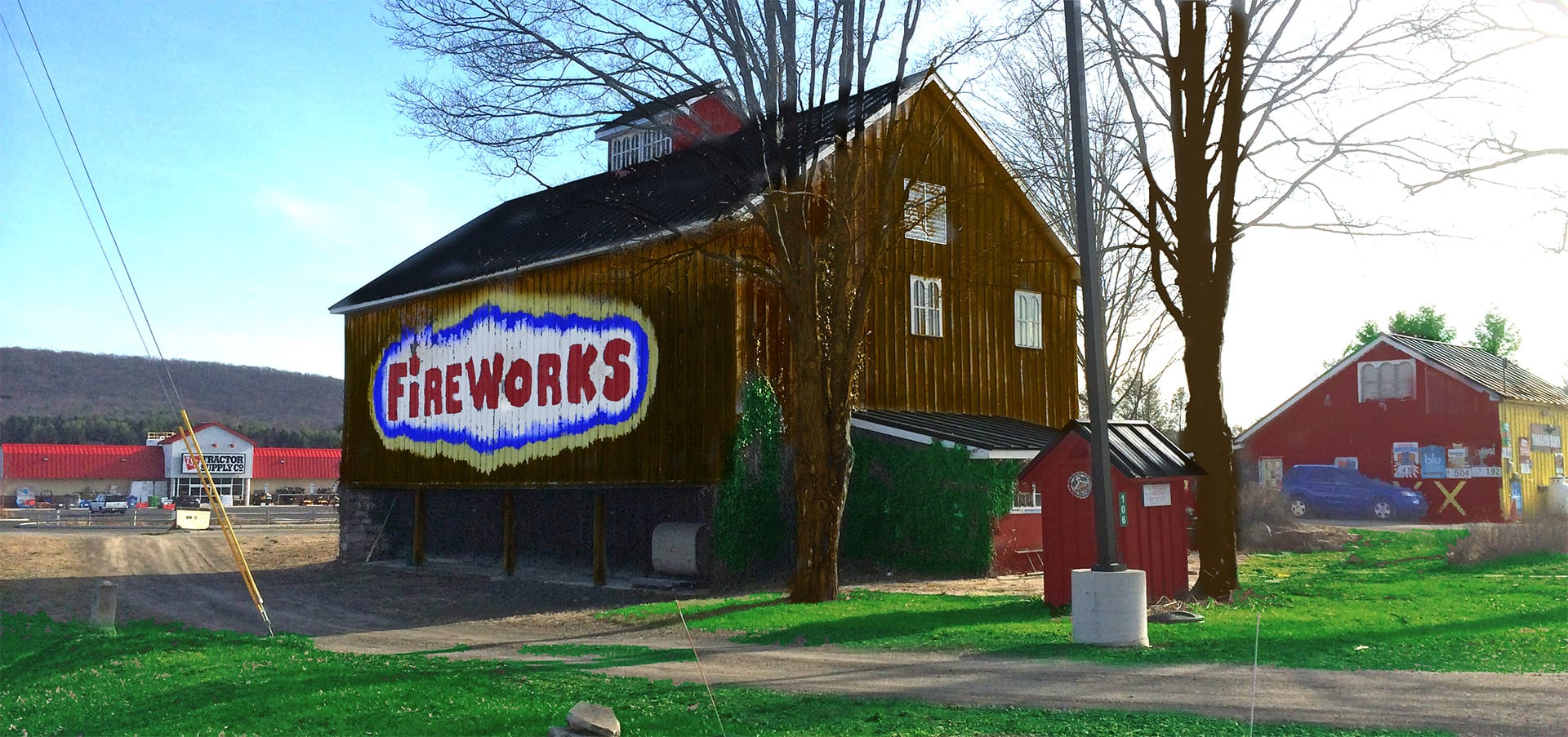GENERAL INFORMATION
FREQUENTLY ASKED
PRODUCT INFORMATION
No, we do not sell M-80s.
We are asked about these and other highly explosive items quite often. They have gone by many names, such as "quarter stick", "cherry bomb", "M-80", "M-100", "silver salute", "pineapple", "ash can" etc.
These items are extremely dangerous, and federally illegal.
We not carry any of these items, nor will we direct you to a place to find them. If you are looking for such items, please consider a legal substitute that provides a similar noise or visual effect that does not assume the dangerous nature or legal repercussions.
For more info on Firework Safety and Security, check out our Fireworks Safety Page and this ATF Page.
YES! New law was adopted in Pennsylvania in October 2017, permitting the use of Consumer Fireworks (1.4G) in the PA. This made fireworks LEGAL FOR PA RESIDENTS to purchase Fireworks products! The new law allows firework fans from all states to purchase our products without hassle!
GET MORE INFO
Visit our Laws Page and Pennsylvania Fireworks Law Post, and the PA State Police FAQ Page for more details on the new legislation!
In the transportation and storage of fireworks, two guidelines or best practices come to mind.
#1: Do not transport or store fireworks where they can be subject to an open flame or flame producing devices.
This may sound obvious, but we still need to say it. We are often asked about the safety of "hot car trunks," however, this should pose no harm to you or the fireworks.
#2: Do not transport or store fireworks where they can be subjected to water or moisture.
Another obvious statement, but there is a little more to consider here regarding storage. Basements, attics, and garages tend to top the list of common storage areas, however, they may have fluctuations in their temperature and humidity. Keep in mind that when the temperature of a cool space increases rapidly, moisture may occur. Plan accordingly to ensure that your products don't fall prey to rapid changes like this!
GET MORE INFO
For more helpful tips, be sure to visit our Transporting Page!
SHOPPING INFORMATION
We accept all major credit & debit cards, along with cash for fireworks purchases. If you use NFC payment systems like ApplePay or Google Wallet, we accept those too!
Wishlists are collections of desired products saved by you, our customer, to your user account. This helps you return to your favorite products in our store without having to search again.
Want to share? You can send a link to your wishlist to share your favorites with friends and family.
No! Because The Fireworks Superstore buys direct from the manufacturers, we are able to offer some of the lowest prices in our region.
We pass our savings on to you, and you get the added benefit of expert customer service, A/C while you browse during those summer scorchers, and a wide array of products you can't find anywhere else.
Unfortunately, due to safety concerns surrounding fireworks and the extensive safe-guards we put in place for products in our custody, we cannot accept refunds after the product has left our store.
We have multiple locations throughout North-Eastern Pennsylvania, including Tannersville, Brodheadsville, and Blakeslee.
GLOSSARY OF TERMS
1.3G Explosives
Formerly known as Class B special fireworks. Items classified as 1.3G explosives are display fireworks.
1.4G Explosives
Formerly known as Class C common fireworks. Items classified as 1.4G explosives are consumer fireworks intended for use by the general public.
APA Standard 87-1
The Standard for Construction and Approval for Transportation of Fireworks, Novelties, and Theatrical Pyrotechnics.
Aerial Shells
A fireworks device designed to be launched into the air for use in a fireworks display.
Aerial Shell
A cartridge containing pyrotechnic composition, a burst charge, and an internal time fuse or module, that is propelled into the air from a mortar.
Assistant
A person who works under the supervision of the pyrotechnic operator.
American Pyrotechnics Association
Trade association for the fireworks industry.
ATF
Please see Bureau of Alcohol, Tobacco, and Firearms.
Barge
Water vessel from which fireworks are discharged.
Barrage
A rapidly fired sequence of aerial fireworks.
Battery
A collection of fireworks devices, such as a group of mortars (finale battery) or a bundle of roman candles (candle battery), fused together in such a manner that they are fired within a short period of time.
Black Match
A fuse made from string that is impregnated with Black Powder.
Black Powder
Material found in fireworks. This material can be used as a propellant charge, to produce sound, as a constituent of other compositions, or in the ignition fuse or timing system of fireworks. Also known as gun powder.
Bouquet
Fountains fired in groups.
Bureau of Alcohol, Tobacco, and Firearms
(ATF) Federal agency which regulates the licensing and storage of display fireworks. This agency monitors the importation, manufacture, distribution, and storage of display fireworks.
Cake
A chain-fused firework that propels a series of aerial shell, comet or mine effects into the air from collectively attached tubes.
Chain Fusing
A series of two or more aerial shells fused to fire in sequence from a single ignition.
Chemical Composition
All pyrotechnic and explosive composition contained in a fireworks device. Inert materials (such as clay used for plugs or organic matter used for density) are not considered to be part of chemical composition.
Comet
A pellet of composition which is propelled from a mortar or shell and produces a long tailed effect. Large comets are constructed much like aerial display shells, with attached lift charge ready for loading into mortars.
Consumer Fireworks
Also known as 1.4G fireworks. Fireworks that are intended for use by the consumer. The permitted usage of consumer fireworks varies by state. Examples are fountains, cones, and firecrackers.
Consumer Product Safety Commission
(CPSC) Federal agency which regulates consumer 1.4G fireworks.
Department of Transportation
(DOT) Federal agency which controls the transport of all hazardous materials including fireworks. This organization also assigns all legal commercial fireworks with an EX Number.
Discharge Site
The area immediately surrounding the fireworks mortars used for an outdoor fireworks display.
Display Fireworks
(Formerly known as special fireworks) Large fireworks articles designed to produce visible or audible effects for entertainment purposes by combustion, deflagration, or detonation.
Display Site
The immediate area where a fireworks display is conducted, including the discharge site, the fallout area, and the required separation distance from mortars to spectator viewing areas, but not spectator viewing areas or vehicle parking areas.
Dud
Any device in which the fuse or igniter fails to ignite the main pyrotechnic charge. The term, dud, is reported to have originated as an acronym for dangerous unexploded device.
Electrical Firing Unit
A device that provides and controls the electric current used to ignite fireworks during a display.
Electrical Ignition
A technique used to ignite fireworks using a source of electric current.
Electric Match
An electric device that contains a small amount of pyrotechnic material that ignites when current flows through the device.
EX Number
The identification number assigned by DOT to a commercial fireworks device. All legal commercial fireworks must have an EX number.
Explosive
Technical Definition: Any material that is capable of undergoing a self-contained and self-sustained exothermic chemical reaction at a rate that is sufficient to produce substantial pressures on their surroundings, thus causing physical damage. Explosives fall into 2 classes: Detonating and Deflagerating.
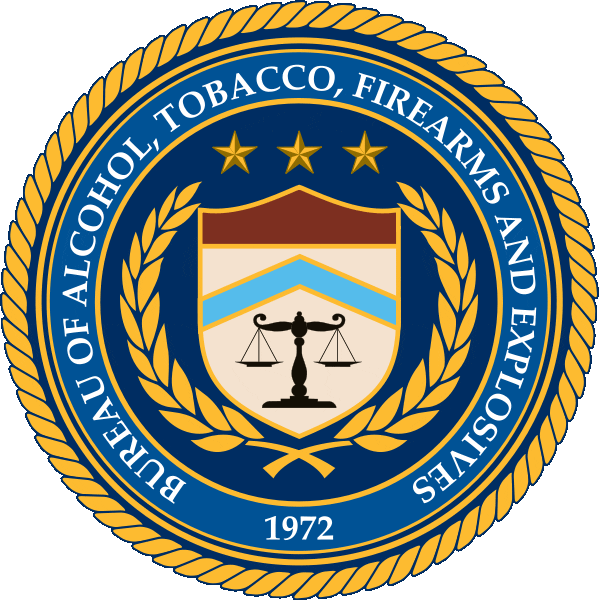
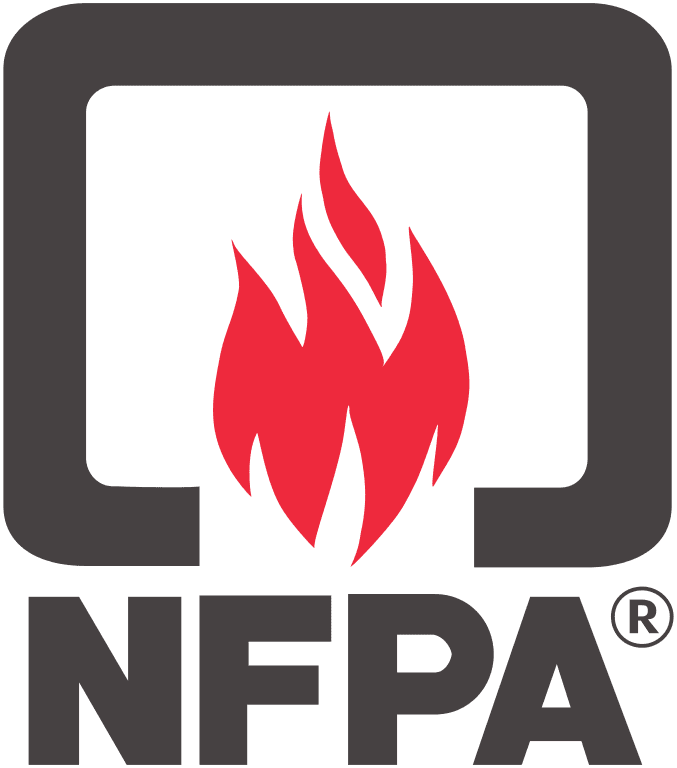
Explosive Composition
Any chemical compound or mixture, the primary purpose of which is to function by explosion, producing an audible effect.
Fallout Area
The designated area in which hazardous debris is intended to fall after a pyrotechnic device is fired.
Finale
A rapidly fired sequence (barrage) of aerial fireworks, typically fired at the end of a display.
Fire (verb)
To ignite pyrotechnics by using an electric match, electrical current, or some other means.
Firing Technician
Individual who actually ignites fireworks devices at a show.
Fireworks
Any composition or device for the purpose of producing a visible or an audible effect by combustion, deflagration, or detonation, and that meets the definition of consumer fireworks or display fireworks.
Fireworks Display
A presentation of fireworks for a public or private gathering.
Fusee
A highway distress flare, sometimes used to ignite fireworks at outdoor fireworks displays.
Flash Powder
Mixtures which contain powdered aluminum or a magnesium/aluminum alloy which, when ignited, can result in a violent explosion and flash.
Fountain
Device that projects a spray of sparks.
Gerb
Small fountain sometimes used with lance-work set pieces.
Girandola
Special wheel which rises rapidly in the air while emitting a spray of sparks and, sometimes, a whistle.
Ground Display Piece
A pyrotechnic device that functions on the ground (as opposed to an aerial shell that functions in the air) and that includes fountains, wheels, and set pieces.
Gun Powder
See Black Powder
Hangfire
A fuse or pyrotechnic ignition composition which continues to glow or burn slowly instead of burning at its normal speed. Such a fuse may suddenly resume burning at its normal rate after a long delay. If the hangfire goes completely out (is extinguished), it is termed a misfire.
Hazardous Debris
Any debris produced or expelled by the functioning of a pyrotechnic device that is capable of causing personal injury or unpredicted property damage.
High Level Fireworks
Devices propelled into the air, usually aerial shells.
Igniter
Also known as an electric match. A device used for the electrical ignition of fireworks and pyrotechnic articles.
Instantaneous Fuse
Also known as Quickmatch. Black match that is encased in a loose-fitting paper or plastic sheath to make it burn extremely rapidly. Quickmatch is used for aerial shells and simultaneous ignition of a number of pyrotechnic devices such as lances in a ground display piece.
Illegal Explosives
Usually unlabelled, these devices exceed the federal maximum explosive charge allowed. Some examples are M-80s, M-100s, and silver salutes. These devices are extremely dangerous and should be avoided. Some members of the public and media incorrectly refer to these devices as fireworks.
Jumping Jacks
Similar in appearance to a firecracker, jumping jacks spin rapidly and emit red and green sparks.
Labels
All legal consumer explosives have mandatory labeling requirements. Included on these labels should be the manufacturer’s name and address, cautions, and directions for use.
Lance
A thin cardboard tube packed with color-producing pyrotechnic composition used to construct ground display pieces.
Lift Charge
The composition that propels (lifts) the pyrotechnic device into the air.
Loader(s)
An assistant(s) who loads or reloads aerial shells, comets, or mines into mortars.
Low Level Fireworks
(Also Ground-to-Air Fireworks) Any of a class of fireworks devices that either perform below approximately 200 feet (60 m) or begin their display at ground level and rise to complete their effect. Some examples of low level fireworks are comets, mines, roman candles, and many consumer fireworks.
Manual Ignition
A technique used to ignite fireworks using a handheld ignition source such as a fusee or portfire.
Mine
A device containing multiple pyrotechnic effects that are simultaneously ignited and dispersed into the air from mortar or tube.
Monitor
The individual at a fireworks display responsible for observing the perimeter of the firing site and insuring that security personnel or barriers keep spectators at a safe distance. Usually provided by the organization sponsoring the event.
Mortar
A tube from which certain aerial devices are fired into the air.
Mortar Rack
Sturdy wooden or metal frames used to support mortars in an upright position usually above ground.
Mortar Trough
Above ground structure filled with sand or similar material into which mortars are positioned.
National Fire Protection Association
(NFPA) Organization which provides several standards that outline recommendations for the manufacture, storage, transportation, and execution of fireworks.
NFPA Standard 1123
Code for Fireworks Display
NFPA Standard 1124
Code for the Manufacture, Transportation, and Storage of Fireworks and Pyrotechnic Articles
NFPA Standard 1126
Standard for the Use of Pyrotechnics Before a Proximate Audience
National Council on Fireworks Safety
A non-profit group that promotes the safe enjoyment of consumer fireworks.
Novelty
A device containing small amounts of pyrotechnic and/or explosive composition but does not fall under the category of consumer fireworks. Such devices produce limited visible or audible effects. Examples are snakes, tanks, poppers, and snappers.
Occupational Safety and Health Administration
(OSHA) Federal agency that inspects fireworks manufacturing plants. OSHA not only regulates non-fireworks specific aspects of plant safety (i.e. housekeeping, electrical requirements, employee training), but also the fireworks-related standards of NFPA Standard 1124.
Operator
The person with overall responsibility for the operation and safety of a fireworks display. The operator is also responsible for storing, setting up, and removing pyrotechnic materials or devices after a performance.
Placard
Warning symbol of a square-on-point configuration mounted on each side and each end of a truck, rail car, or freight container which informs the public and emergency personnel of the hazardous nature of cargo, as specified in 49 CFR, § 172.
Portfire
A long tube containing slow-burning pyrotechnic composition that is sometimes used to ignite fireworks at outdoor fireworks displays.
Proximate Audience
An audience that is closer to pyrotechnic devices than allowed by the NFPA 1123, Code for the Outdoor Display of Fireworks.
Pyrotechnic Device
Any device containing pyrotechnic materials and capable of producing a special effect.
Pyrotechnic Material
A chemical mixture used in the entertainment industry to produce visible or audible effects by combustion, deflagration, or detonation.
Pyrotechnic Special Effect
A special effect created through the use of pyrotechnic materials and devices.
Pyrotechnics
Controlled exothermic chemical reactions that are timed to create the effects of heat, gas, sound, dispersion of aerosols, emission of visible electromagnetic radiation, or a combination of these effects to provide the maximum effect from the least volume.
Quickmatch
Also known as an Instantaneous Fuse. Black match that is encased in a loose-fitting paper or plastic sheath to make it burn extremely rapidly. Quick match is used for aerial shells and for simultaneous ignition of a number of pyrotechnic devices, such as lances in a ground display piece.
Ready Box
A storage container for aerial devices for use during set-up and display.
Ready Box Tender
Assistant who controls and dispenses the contents of ready box(es) during a fireworks display.
Report
A component of an aerial display shell or mine. A report contains salute powder, a powerful pyrotechnic composition (usually flash powder) which explodes violently, producing a loud noise with the visual effect of a bright flash and smoke.
Roman Candle
A chain-fused firework that propels a series of aerial shell, comet or mine effects into the air from a single tube.
Safety Cap
A tube, closed at one end that is placed over the end of the fuse until intended ignition to protect it from damage and accidental ignition.
Salute
Fireworks designed to produce an explosive sound as its primary effect.
Salute (Aerial)
A salute that functions as an aerial shell.
Salute (Ground)
A salute that functions from a stationary or secured position.
Salute Powder
A pyrotechnic composition that makes an explosive sound when ignited and constitutes the sole pyrotechnic effect of a salute.
Set Piece
A ground display such as lancework, wheels, gerbs, fountains, and/or other devices, which function while on poles, frames, or other structures, attached to the ground.
Site Plan
Sketch or map of the fireworks display site or of the area of a performance using pyrotechnic special effects.
Sponsor
The organization (person, group, or government agency) that arranges with a duly authorized fireworks supplier for its services in presenting a fireworks display or in providing fireworks for use in a display.
Spotter
A member of the fireworks display crew (either the operator or an assistant) who observes the firing and bursting of aerial shells and other display fireworks for the purpose of detecting proper mortar angling, noting the occurrence of duds, and observing for other potentially hazardous situations.
Stars
Fireworks materials that are compressed into small cubes or round pellets.
Supply Tender
Individual at a fireworks display who controls all product. This person ensures that shells are dispersed only as they are needed.
Tail
Burning trail that follows a star or comet.
Theatrical Pyrotechnics
Pyrotechnic devices for professional use in the entertainment industry. Similar to consumer fireworks in chemical composition and construction but not intended for consumer use.
Wheel
A stationary device that spins and creates a circular ring of fire and sparks. These are generally nailed to a pole or a tree before they are lit.
Willow
Similar to a chrysanthemum effect, but with long-burning silver or gold stars that produce a soft, dome-shaped weeping willow-like effect.
Whistle
High pitched often very loud screaming and screeching created by the resonance of gas. This is caused by a very fast strobing (on/off burning stage) of the fuel. The rapid bursts of gas from the fuel vibrate the air many hundreds of times per second causing the familiar whistling sound.
